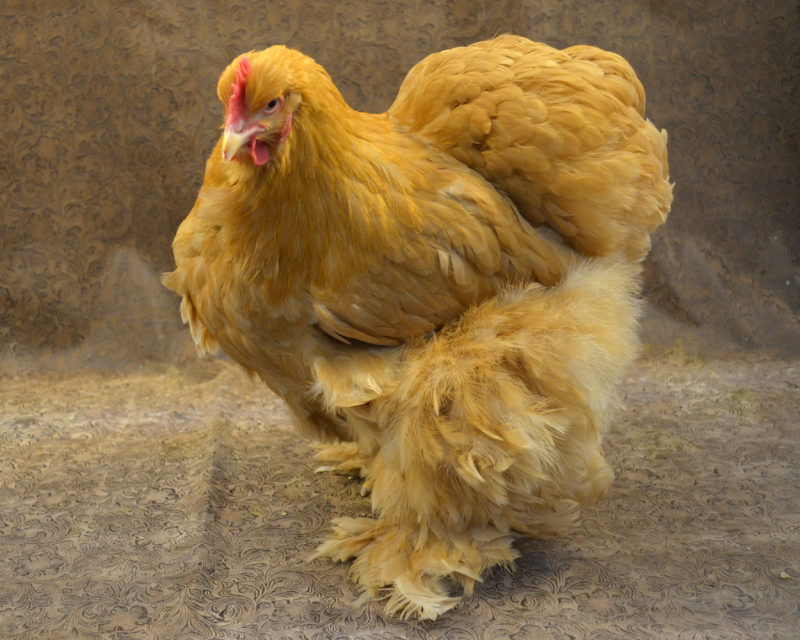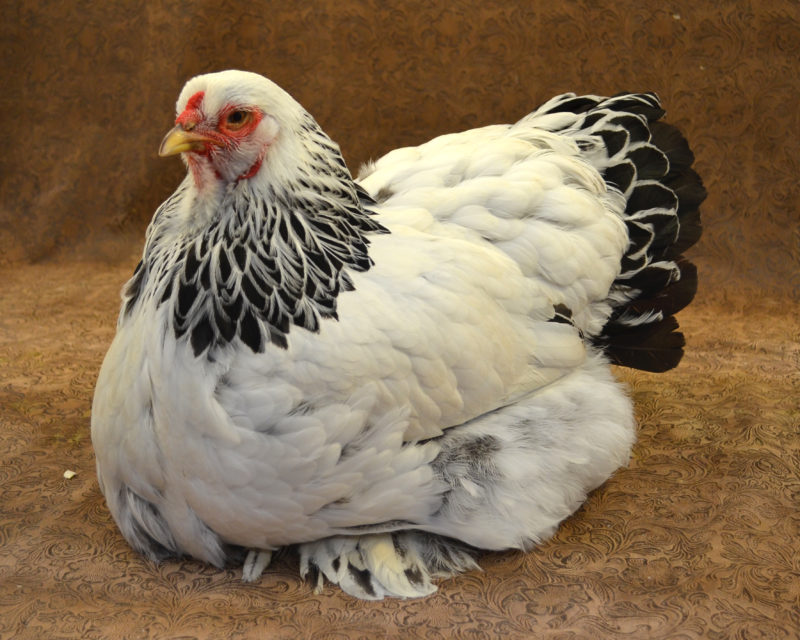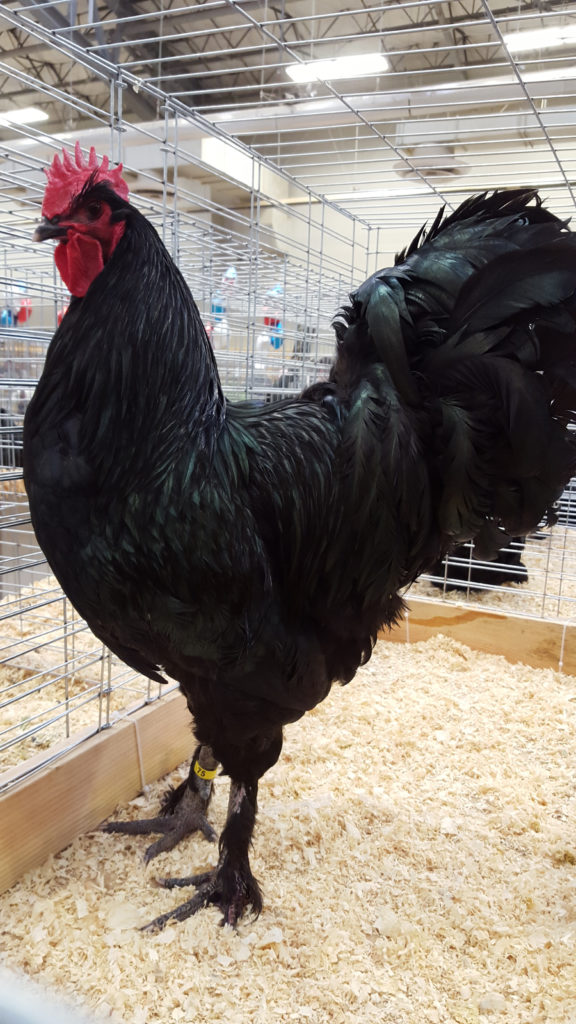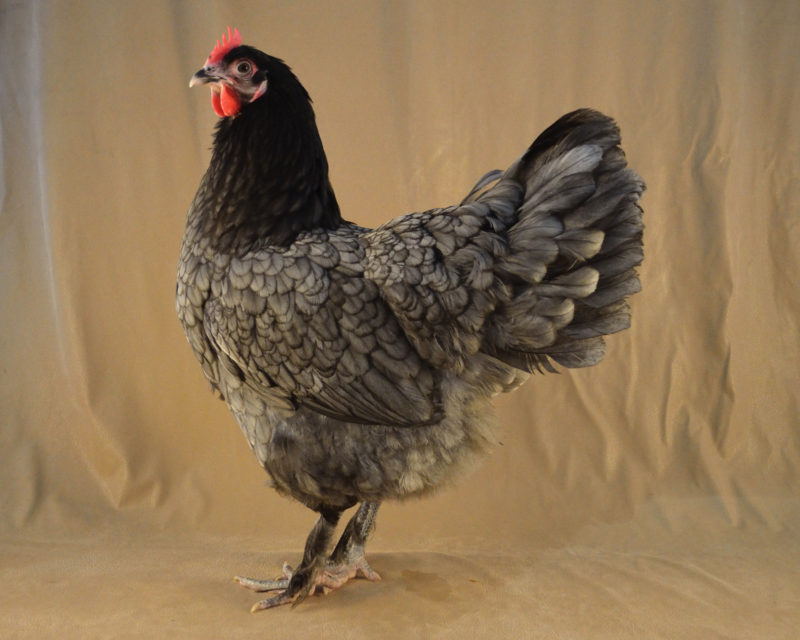Jeannette Beranger shares fascinating information about Asiatic breeds of chickens that we know and love. All Photos courtesy of the Livestock Conservancy.
There are many numerous breeds of chickens found throughout the world but few can claim to have ignited a literal revolution and renaissance of love for chicken breeding that was aptly named the period the time of “Hen Fever.” I refer to the influence of some of the birds the American Poultry Association defines as the Asiatic class of breeds – the Brahma, the Cochin, and the Langshan.
In October of 1843 the treaty of Bogue was signed between the United Kingdom and China and this opened trade to numerous parts of China previously inaccessible to Europeans. Many exotic goods found their way into Europe from China and other parts of Asia including livestock and poultry. When the ancestors of these birds first appeared in Europe and America, they were received as a sensation. No one could have imagined their introduction would lead to a golden age of breed development on both continents at the time.
Cochin Craze
In 1845 one of the never before seen breeds to arrive in the West was then known as the Chinese Shanghai or Cochin China fowl. They differed from European birds with their massive size and profuse feathering throughout the body including heavily feathered legs and feet. With their great size came an appetite to meet its body’s demand. In fact hens have a reputation toward eating too much if overfed so caution must be taken to ensure they stay a healthy weight.

Black Cochin Rooster
They can be nice winter layers averaging about 100-140 large brown eggs in their prime, but obesity will cut egg production. These birds do require a lot of feed compared to others which ultimately made them less profitable than some of the other breeds brought in from the Far East. Despite this, they still garnered much attention from the poultry fancy thanks to their sweet dispositions and the peaceful lifestyle that even the Cochin roosters preferred amongst each other. Rarely is aggression known in large fowl Cochins. They are easy to please, easy to keep within a perimeter fence, and will not wander far from home if they manage to leave their yard.
A Real “Softie”
It can be said that some of the softest feathers in the chicken world belong to the Cochin. They have great amounts of down feathers and under-fluff that adds to their large appearance. What strikes anyone lucky enough to hold a Cochin is just how soft and fluffy they feel to the touch. It’s quite extraordinary and what endears this breed to many fanciers. Their deep rooted and attentive mothering skills are also valued by their keepers. They are universally recognized as outstanding broodies. So much so that even Cochin roosters have been known to brood chicks! Hens have a strong nesting drive and can easily be convinced to brood more than one clutch a year. They can be used as a reliable broodies not only for chickens but for other species such as turkeys, geese, or ducks.

Buff Cochin Pullet
Cochin roosters can mature up to 11 pounds and the hens 8 ½ pounds. Original colors approved by the American Poultry Association included Buff, Partridge, White, and Black. Today you can also find newer varieties including the Silver Laced, Golden Laced, Blue, Brown, and Barred.
The “King of All Poultry”
Eastern Asia, including India, also had newly discovered landrace fowl from regions around many of the trading ports that were then more increasingly visited by European vessels. If they survived the journey and stayed off of the plates of the ships’ crew they were highly desired as the poultry craze continues to grow. To European eyes the birds were wondrous. Another of the early breeds to grab the interest of poultrymen was known as the “Chittigong” which got its name from the Chittigong Hills area of what we know today as East Bengal. Some made their way to America and an early breeder, Dr. John C. Bennet used these birds to help create what he first called “Burrampooter” chickens. They were first exhibited in Boston in 1850.

Young Brahmas
The name of the birds evolved to be known as Brahma Pootras and later simply Brahmas. The name was inadvertently shortened by Mr. T.B. Miner, who published The Norther Farmer and it was rumored that he did so to save space in his publication because they were mentioned so often. Many refinements were made on the animals and eventually three colors came to be recognized by the American Poultry Association – the Dark, the Light, and the Buff.

Brahma Hen
The Brahma quickly gained an enthusiastic following and has often been called the “King of All Poultry” because of their impressive stature and production qualities. They were poultry royalty to the point that even Queen Victoria of England had some for her poultry yard. The roosters grow to an astounding 12 pounds and hens to 10 pounds. A well-finished Brahma could literally feed a sizeable family for Sunday dinner. It reigned as one of the leading meat breeds from the middle of the 19th century through to the 1930’s. They are particularly suited for producing fast growing and hardy hybrid meat chickens for market.
The breed’s immense size and tight and profuse feathering makes it best suited for cooler climates than in warmer climates where they will need plenty of shade and water if they are to be comfortable. They are typically docile and peaceful in nature and will not wander far from their coop. The birds have heavily feathered legs and feet so keeping them on well-drained soil will be best.
Slow and Steady Wins the Race
The Brahma takes its time to reach adult weight. For the first six months of life its body is building structure and bone. Seasoned Brahma breeders will tell you that it takes a full two years for a rooster to fully mature at which time they will have become a spectacular sight. Even today this is still the case. A couple of years ago a video of a Brahma rooster circulated on the internet and it went viral across the world with millions of viewers stunned at how large the bird was. The Livestock Conservancy’s office was inundated for over a week with phone inquiries and emails from members of the press to verify that they are indeed as big as the video indicated!
Mamma Brahmas
Brahma hens are decent layers and have been known to lay up to 200 very large brown eggs a year in their prime years. Because of the dense feathering of the breed, producers have at times found it beneficial to trim feathers around the birds’ vent to improve fertility rates during breeding season. Hens can become broody and make excellent mothers by all accounts.
A tall order to match
The final breed of the Asiatic class is another chicken hailing from China. Specifically, the Langshan district along the Yangtszekiang River from which the Langshan chicken gets its name. They were first imported to England by Major A.C. Croad. They too were also sometimes referred to as Shanghai chickens. Several types emerged from this population in the UK and Germany. In England fanciers bred Langshans with a great depth of body and a large breast and call them “Croad Langshans” as homage to the first importer of the birds. A longer legged, smaller breasted variety is the modern Langshan we most commonly know today in America although the Croad Langshan is also present in the US. Their silhouette is distinct. They are found to be tall fowl due to a combination of the great depth of their bodies and their long legs. They naturally hold their tails very high to the point that if you follow the neck along the back and to the end of the tail, an unmistakable “u” shape can be seen like no other chicken.

Langshan Cockerel
The first Langshans recognized by the American Poultry Association were of the Black variety. Later the White and the Blue varieties got official recognition.
Beating the Heat
Of the Asiatic class, the Langshan is the one most suited to deal with the heat of warmer climates. Their legs have fewer feathers than the Brahma and the Cochin and this lends itself to help with radiation of body heat. Unlike its heavyweight compatriots of Asia, the Langshan is a very active forager and can fly over fences. Their bones are more fine and they are the smallest of the three breeds with roosters reaching 9 ½ pounds and the hens 7 ½ pounds. Langshans are prized for the rich flavor of their abundant and particularly white meat compared to others. The hens are respectable layers of 150-200 large brown eggs in the height of their laying years.
Like the others in this delightful class of birds, the Langshan is typically a peaceful bird and is known to be active but friendly.

Blue Langshan pullet
The age of “hen fever” came to a close and agriculture eventually shifted toward commercial production in the 20th century. Producers favored faster growing and more efficient fowl for consumers, so many breeds lost their jobs to the competition. Despite this, the Asiatic chickens are still considered some of the greatest favorites within the poultry fancy and represent traits found in no other chickens. It’s with this in mind that they should be considered treasures among their kind and conserved for future generations to enjoy and appreciate.
For more information on these breeds please visit
The Livestock Conservancy www.livestockconservancy.org
American Poultry Association http://amerpoultryassn.com/
Cochins International https://www.cochinsint.com/
American Brahma Club www.americanbrahmaclub.org
American Langshan Club www.americanlangshanclub.org
Jeannette Beranger is the Senior Program Manager for The Conservancy. She came to the organization with 25 years’ experience working as an animal professional including veterinary and zoological institutions with a focus on Heritage breeds. She has been with The Conservancy since 2005 and uses her knowledge to plan and implement conservation programs, conduct field research, and advise farmers in their endeavors with rare breeds. She is co-author of the best-selling book “An Introduction to Heritage Breeds.” At home she maintains a Heritage breeds farm with a focus on rare breed chickens & horses. In 2015 she was honored as one of the top “45 Amazing Country Women in America” by Country Woman magazine for her long standing dedication to endangered breed conservation. www.livestockconservancy.org












